Designing Ducati’s Diavel V4
We speak with the motorbike brand’s Global Design Director, Andrea Ferraresi
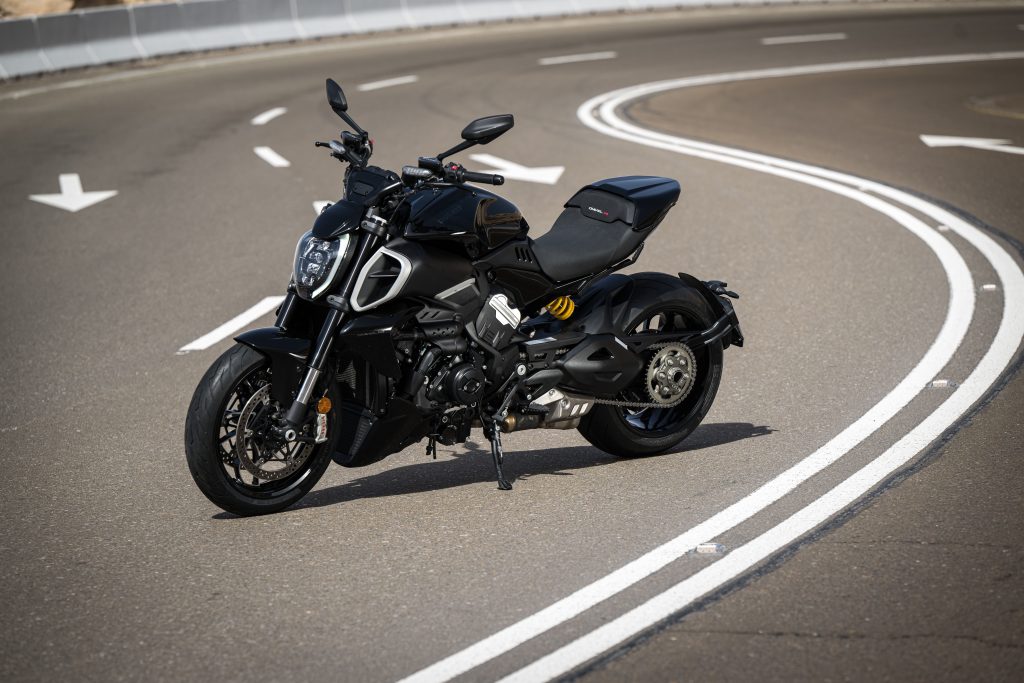
Stare long enough at Ducati‘s new Diavel V4 and it starts looking like something other than a motorcycle. Its exhaust twists into a metallic organ. From the side, a distinct visible bend cuts from the tail to the nose—a sort of curved stress line, with its highest point at the apex of the gas tank. From the rear, the taillight twinkles into a firmament of red stars.
This is the third version of the Diavel (the V4 in its name indicates the number of cylinders in the engine as well as the motor’s shape). The first Diavel debuted in 2011, but the bike has changed significantly from that time, with each iteration helmed by the brand’s Global Design Director, Andrea Ferraresi, who has been with Ducati since 2006. Ferraresi’s emotional connection may be a primary draw of the Diavel’s 12-year success (it has sold approximately 45,000 units worldwide) and he is most proud of the V4 for fusing the visual philosophy of three bikes into the ultimate single-quiver motorcycle.
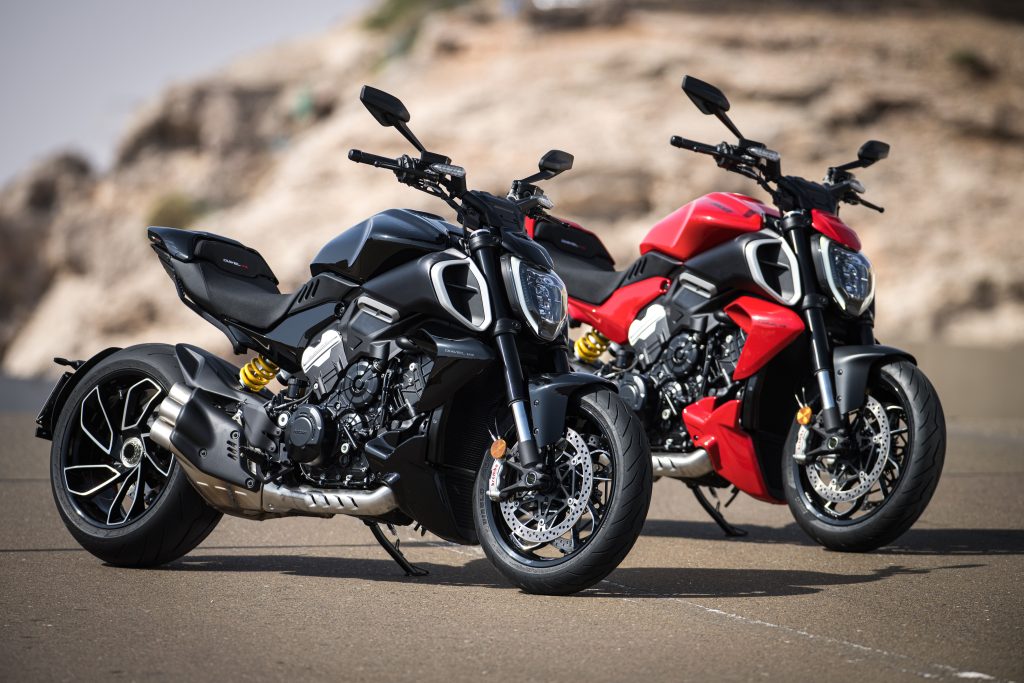
The new motor, which doubles its cylinder count even while shrinking in size, provided Ferraresi and the design team more room to work around the motor while also revealing more of its structure. Displacement also drops from 1260cc down to 1158cc, even as peak horsepower jumps 7% from 157hp to 168hp.
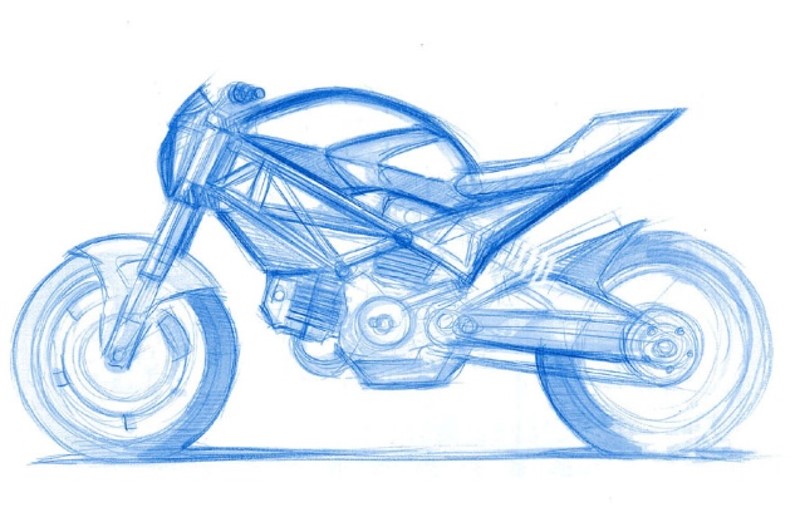
Further, Ferraresi says this latest version isn’t purely a sport or naked bike, with all of that mechanical bravado, or a superbike meant for the track (with attendant back pain everywhere else) or even a cruiser. Sit on one and you immediately feel like you’re on a different motorcycle than what you were eyeballing. The V4 allows a more upright riding position than you’d guess thanks to its swept back bars, and even though visually it pulls some lines from a superbike, with the peeled-back flavor revealing the machinery beneath, it’s something else.
We asked Ferraresi for a deeper visual walk-around, to better understand how individual elements define the complete machine.

What’s important about the right blend of all three kinds of motorcycles—what did you have to emphasize and maybe tell us why?
On every sports bike, you immediately recognize this character line that goes from the tip of the tail to the nose of the motorcycle, and here we have that but we break it, because we want to emphasize that this is a mix of sports and naked [styles]. You want the DNA to also have some of the look-at-me stance too of a naked one. And you can see that the athletic line, like a sprinter in a crouch, creates this illusion of the performance of a sports bike. When you ride it and start going on a twisty road you’ll recognize that there is the performance of a sport bike but you can ride it relaxed, too.
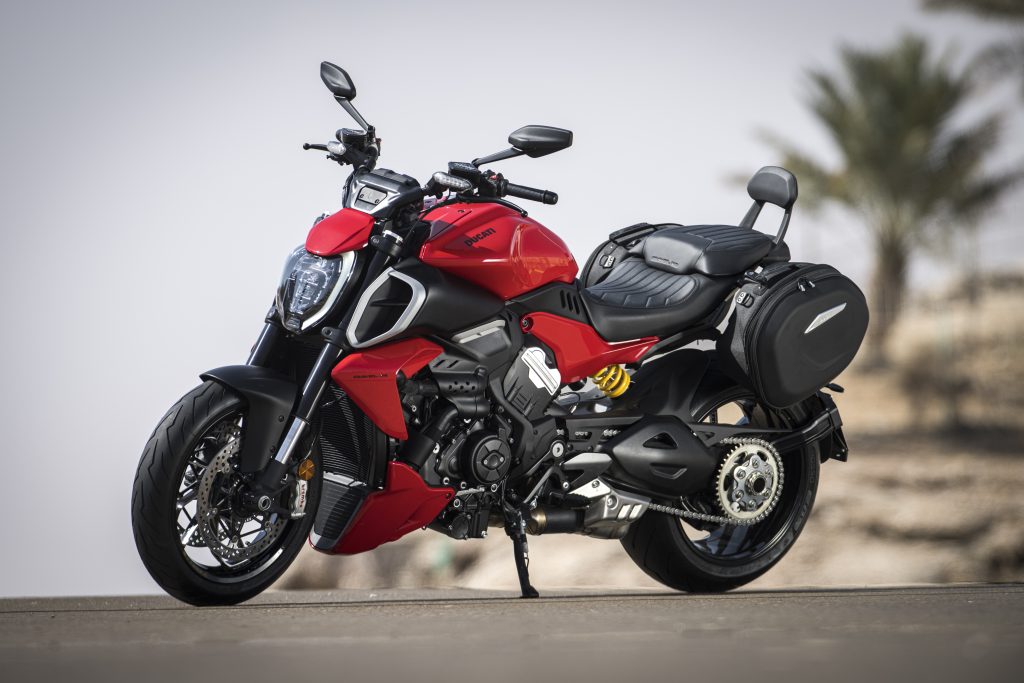
The seat seems carved into the chassis, like on a sports bike—even though the riding position is more relaxed. What’s the visual trick with this geometry?
Actually when you look at the tank, you recognize something more shapely and sculpted than a cruiser. That and the fully exposed, naked engine signal a performance point of view.
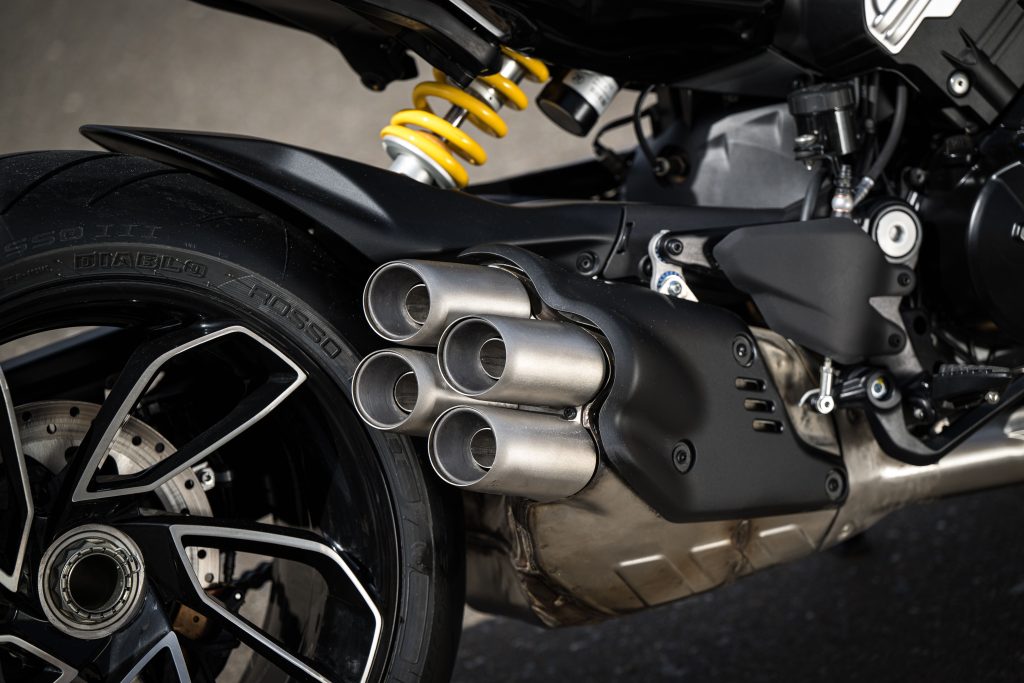
Tell us about the “grenade launcher” muffler.
This tells you a lot about the bike. This is not just the device to reduce noise; it gives you an emotion. You look at the exhaust and you immediately feel that the bike has power.

The air intakes at the front echo the LED running light that rings the headlamp. These are also almost Ducati shield shaped, but what else are we seeing?
The headlight is the face of the bike and the air scoops give the impression of a kind of jet fighter, like an F16. The impression should be the idea that the engine needs a lot of air to breathe, to unleash its power. So even when the bike is standing, we wanted to show that it has this huge mouth—that gives the impression immediately that the bike is powerful and fast.

The front brake caliper has a unique design. It’s clearly not a part you just ordered and attached. Can you explain why that matters?
This is not a racing motorcycle, but our heritage—our DNA is racing. So whatever we have to make we look to that heritage. If you go on a racing motorcycle, you will see a bracket like this. This is a muscle cruiser. You don’t need it so light and thin but nevertheless, we decided to go with this type of solution because this is our DNA. We are a racing company. And so every solution must be the lightest, most functional possible.

The taillight comprises lots of red stars, with each LED in the shape of the Ducati shield. Tell us about developing that detail.
It took literally over 1,000 attempts to make this right. It’s the most complicated light we’ve ever done. Like many of the details, I look at it alone and I see it really as a work of art—a kind of magic.
Images courtesy of Ducati











